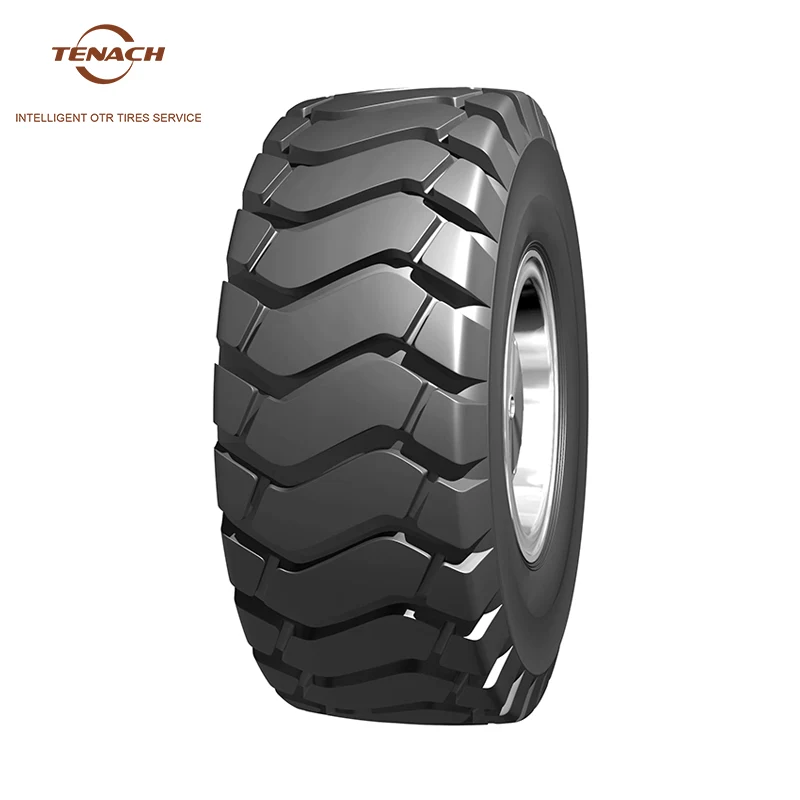What is the difference between bias and radial OTR tires?
2024-10-25
The difference between bias and radial OTR (Off-The-Road) tires comes down to their construction, performance, and application suitability. Both types of tires are used on heavy machinery like loaders, dump trucks, and earth-moving equipment in industries such as mining, construction, and agriculture. However, their structural differences lead to distinct advantages and disadvantages, depending on the terrain, load, and speed requirements. Here's a breakdown of their key differences:

1. Construction
The main difference between bias and radial OTR tires is in the way their internal plies (layers) are arranged:
- Bias Tires:
- The internal plies of bias tires are layered diagonally from bead to bead (the part of the tire that contacts the rim).
- The plies crisscross at angles (typically 30 to 45 degrees) to create a thicker and more rigid structure.
- Sidewalls and tread areas are interconnected, meaning that the entire tire flexes together when under pressure or load.
- Radial Tires:
- Radial tires have plies that run perpendicular to the tire’s bead, with steel belts placed under the tread.
- The sidewall and tread act independently because the plies in the sidewall are separate from the reinforcement in the tread area.
- Radial construction allows for more flexibility in the sidewall while keeping the tread area stiff and durable.
2. Performance
Due to their different construction methods, bias and radial OTR tires offer different levels of performance in key areas like traction, durability, and comfort.
- Bias Tires:
- Durability: Bias tires are known for their ruggedness and durability, especially in tough off-road conditions with jagged rocks or sharp debris. The thicker, stiffer construction makes them more resistant to punctures in extreme environments.
- Cost: Generally less expensive to manufacture and purchase compared to radial tires, which makes them attractive for short-term projects or less demanding applications.
- Ride Comfort: Due to their stiffer construction, bias tires offer less comfort, as they transmit more vibrations to the vehicle, especially on rough terrain.
- Traction: On soft, uneven surfaces like mud or loose soil, bias tires tend to provide better traction because the entire tire flexes, creating a larger contact patch with the ground.
- Radial Tires:
- Longevity: Radial tires generally last longer than bias tires, particularly in high-speed or high-mileage applications, due to their ability to dissipate heat more efficiently. This leads to less wear and a longer life.
- Fuel Efficiency: The flexible sidewalls of radial tires reduce rolling resistance, which can lead to better fuel efficiency, especially on longer hauls.
- Ride Comfort: Radial tires offer a smoother ride, as their flexible sidewalls absorb shocks and vibrations, which is especially beneficial for operators working long hours.
- Traction and Stability: Radial tires are superior on hard or paved surfaces, providing better traction and stability. The stiff tread maintains better contact with the ground, resulting in improved handling and load distribution.
3. Applications
Bias and radial tires are suited to different types of machinery and environments based on their performance characteristics:
- Bias Tires:
- Best for low-speed, heavy-load applications like loaders, dozers, and scrapers in rugged terrains, such as quarries, mines, or construction sites with loose soil.
- Ideal for short distances or work in environments where tire damage is more likely (e.g., sharp rocks or debris).
- Radial Tires:
- Best for high-speed, long-haul applications such as dump trucks, articulated haulers, and graders, where a smoother ride and fuel efficiency are more important.
- Suitable for mixed-use environments, including paved surfaces or harder terrains where heat buildup from continuous operation can be a concern.
4. Flexibility and Load Distribution
- Bias Tires:
- More rigid sidewalls mean that the tire flexes as a whole, leading to less even load distribution across the tire.
- The stiffness can result in less tire deformation, which is good in some heavy-duty applications but can cause uneven wear and reduced traction on certain terrains.
- Radial Tires:
- The separation of the sidewall from the tread in radial tires allows for better load distribution, with the tread maintaining contact with the ground even under heavy loads.
- This flexibility also leads to a more consistent wear pattern, resulting in a longer lifespan.
5. Cost
- Bias Tires: Generally, bias OTR tires are cheaper upfront. However, they tend to wear out faster and may require more frequent replacements.
- Radial Tires: Though more expensive initially, radial tires often offer better long-term value due to their longer lifespan, improved fuel efficiency, and better overall performance in high-speed or heavy-load operations.
Conclusion
In summary, the choice between bias and radial OTR tires depends on your specific needs:
- Bias tires are ideal for low-speed, rugged, and tough terrain applications where durability and cost are priorities.
- Radial tires excel in high-speed, long-distance applications with better fuel efficiency, comfort, and longevity.
Understanding these differences can help you choose the right tire for your off-road machinery, ultimately improving performance, reducing costs, and extending equipment life.


